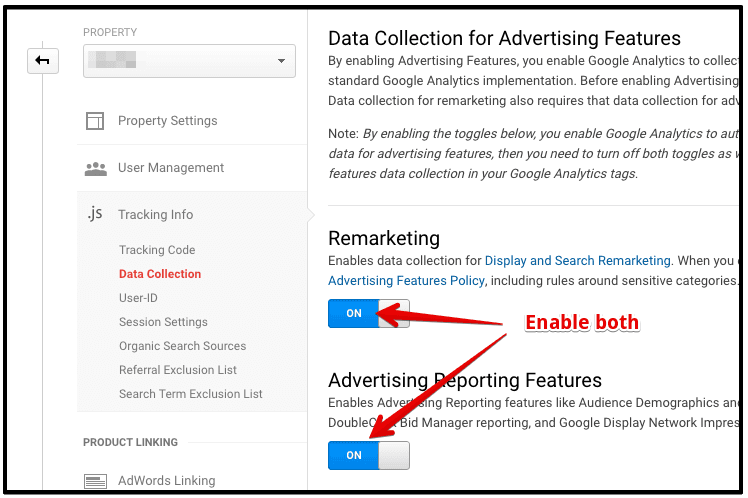Maximizing Your Projects with Remarketing In Google Analytics
Wiki Article
Using Remarketing in Google Analytics: A Comprehensive Guide
Taking advantage of remarketing in Google Analytics uses companies a strategic edge in reaching out to possible consumers. This overview will certainly lose light on the crucial actions included in utilizing the full possibility of remarketing in Google Analytics, leading to boosted advertising and marketing end results.Recognizing Remarketing in Google Analytics
Remarketing in Google Analytics enables companies to strategically target customers who have formerly engaged with their web site or mobile app. By leveraging data from Google Analytics, organizations can create customized remarketing listings based on user habits, such as pages checked out, actions taken, or particular objectives accomplished. This powerful device allows companies to re-engage with users that have revealed rate of interest in their service or products, ultimately raising the probability of conversion.Understanding the various kinds of remarketing methods is essential for an effective campaign - What Is “Remarketing” In Google Analytics?. Google Analytics supplies different alternatives, including typical remarketing, dynamic remarketing, and remarketing lists for search advertisements (RLSA) Each kind offers a distinct objective and can be tailored to meet specific advertising and marketing objectives
Additionally, analyzing the efficiency of remarketing campaigns is vital for optimizing results. Google Analytics provides important understandings right into the efficiency of various remarketing strategies, enabling services to make data-driven choices and refine their targeting approach. By continuously checking and readjusting remarketing efforts based upon analytics information, organizations can take full advantage of ROI and drive success in their advertising efforts.
Setting Up Remarketing Projects

After establishing up target market checklists, the next action is to link Google Analytics with Google Advertisements. By linking these 2 systems, services can effortlessly move audience listings from Google Analytics to Google Ads for remarketing purposes. This integration enables for even more accurate targeting and much better campaign performance.
As soon as the accounts are connected, services can produce remarketing campaigns in Google Advertisements using the target market lists previously defined in Google Analytics. These campaigns can be customized with details advertisement creatives, messaging, and bidding approaches to successfully re-engage with past visitors and drive conversions. By complying with these steps, services can take advantage of the power of remarketing to enhance their advertising initiatives and increase ROI.
Making Use Of Target Market Division Strategies

Predefined sectors in Google Analytics allow you to you can find out more rapidly evaluate usual audience classifications like brand-new users, returning individuals, or users who finished a specific goal on your web site. Personalized segments, on the other hand, enable you to create unique sections based upon certain requirements that are necessary to your company objectives. Dynamic remarketing checklists instantly adjust based on customer behavior, showing individualized advertisements to customers who have engaged with your website particularly means.
Studying Remarketing Efficiency Metrics
Upon examining the effectiveness of remarketing projects in Google Analytics, the analysis of vital performance metrics supplies important understandings into target market engagement and conversion prices. By delving into metrics such as click-through prices (CTR), conversion rates, cost per procurement (CPA), and return on advertisement spend (ROAS), marketing visit this web-site experts can gauge the success of their remarketing efforts. Assessing these metrics enables marketers to optimize campaigns, fine-tune audience targeting, and allocate budget plans effectively to enhance total remarketing performance.Enhancing Remarketing Methods
When refining remarketing strategies in Google Analytics, focusing on audience division is paramount for attaining campaign success. By splitting your target market into particular sections based upon their habits, demographics, or passions, you can tailor your ads better to each team. This targeted approach boosts the likelihood of engaging individuals who have already shown rate of interest in your services or products, causing higher conversion rates.One more crucial aspect of enhancing remarketing methods is continually screening and refining your projects (What Is “Remarketing” In Google Analytics?). A/B screening various advertisement creatives, messaging, or deals can aid you recognize what reverberates ideal with your target market and drives one of the most conversions. By analyzing the performance of these examinations in Google Analytics, you can make data-driven choices to enhance your remarketing initiatives additionally
Moreover, leveraging vibrant remarketing can dramatically enhance your campaign results. This attribute allows you to show tailored ads to individuals based on their previous internet interactions with your internet site, showcasing solutions or products they have actually formerly viewed. By supplying customized material to individuals based on their habits and rate of interests, dynamic remarketing can help raise engagement and drive conversions.
Verdict
In verdict, taking advantage of remarketing in Google Analytics is a calculated technique to target individuals who have actually formerly engaged with a website. By developing personalized audience checklists and utilizing target market segmentation techniques, businesses can enhance remarketing advocate increased conversion prices. Evaluating efficiency metrics and continuously maximizing techniques are critical for optimizing the effectiveness of remarketing initiatives.Google Analytics provides numerous choices, including standard remarketing, vibrant remarketing, and remarketing lists for search ads (RLSA)After establishing up audience checklists, the next action is to link Google Analytics with Google Ads. By linking these two systems, services can seamlessly move target market lists from Google Analytics to Google Ads for remarketing functions.Once the accounts are linked, services can produce remarketing projects in Google Ads using the target market lists previously specified in Google Analytics.When refining remarketing approaches in Google Analytics, focusing on audience division is paramount for accomplishing campaign success.
Report this wiki page